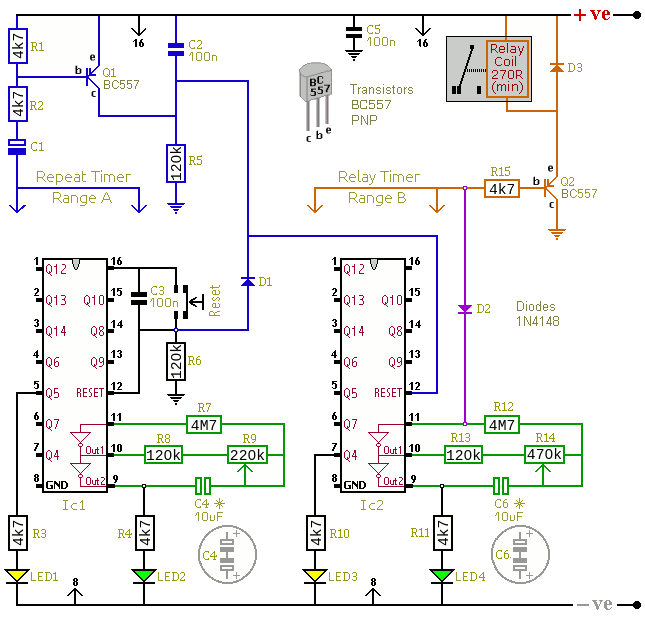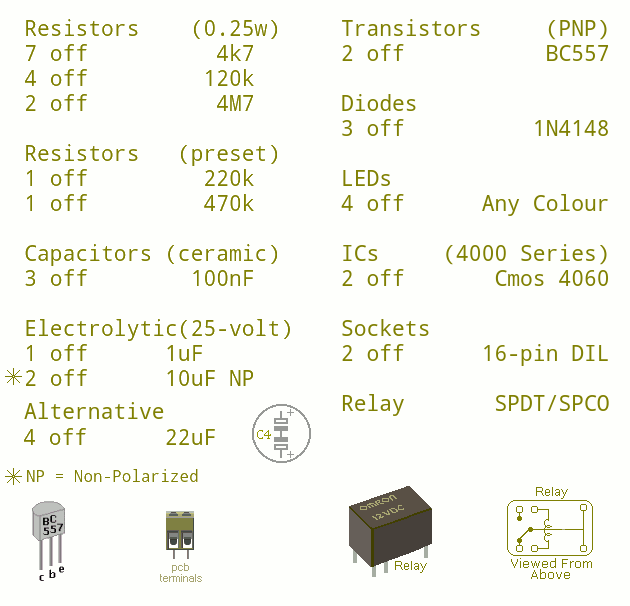The terminals are a good set of reference points. To fit them - you may need to enlarge the holes slightly. Then turn the board over and use a felt-tip pen to mark the 40 places where the tracks are to be cut. Before you cut the tracks, use the "actual size" drawing to
Check That The Pattern is Correctly Marked .
Actual Size
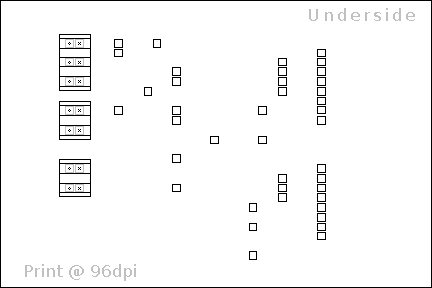
When you're satisfied that the pattern is right - cut the tracks. Make sure that the copper is cut all the way through. Sometimes a small strand of copper remains at the side of the cut and this will cause malfunction. Use a magnifying glass - and backlight the board. It only takes the smallest strand of copper to cause a problem. If you don't have the proper track-cutting tool - a 6 to 8 mm drill-bit will do. Just use the drill-bit as a hand tool - there's no need for a drilling machine.
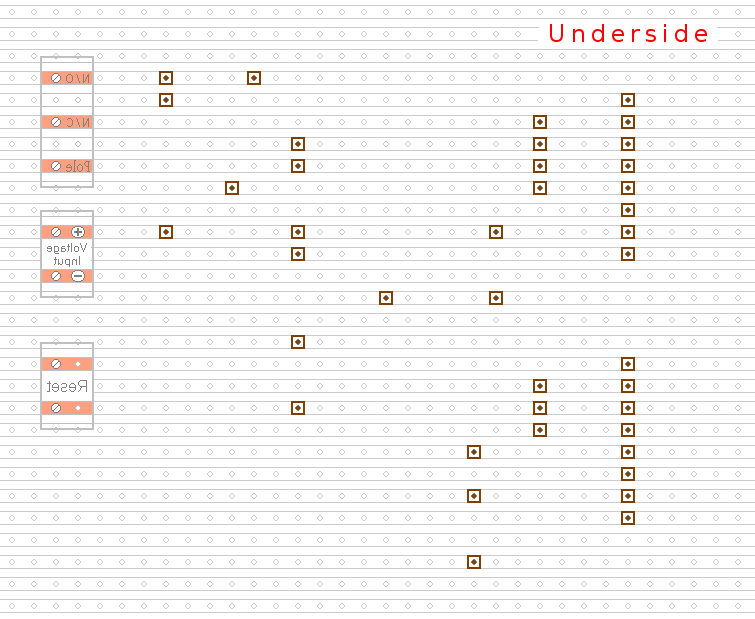
Next make and fit the
Wire Links. I used bare copper wire on the component side of the board. Telephone cable is suitable - the single stranded variety used indoors to wire telephone sockets. Stretching the core slightly will straighten it - and also allow the insulation to slip off.
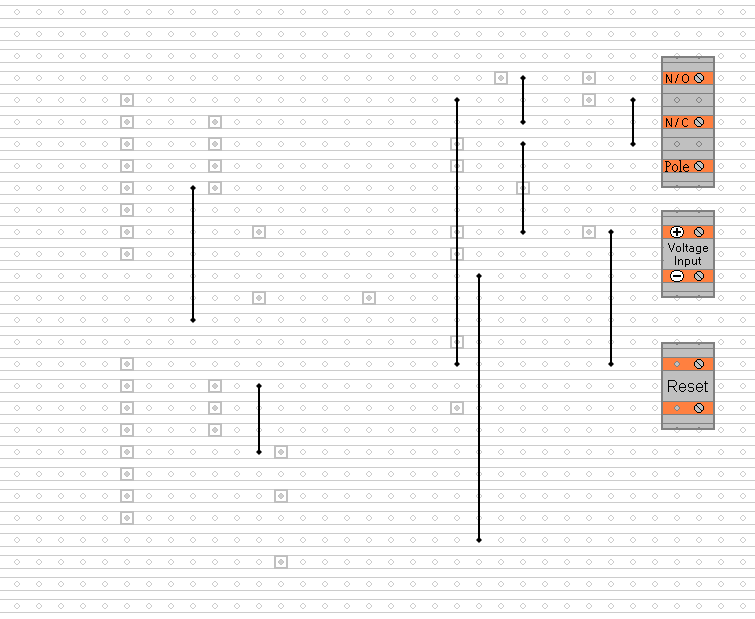
Then fit the thirteen resistors and the two potentiometers. The resistors are all shown lying flat on the board. However, those connected between close or adjacent tracks are mounted standing upright.
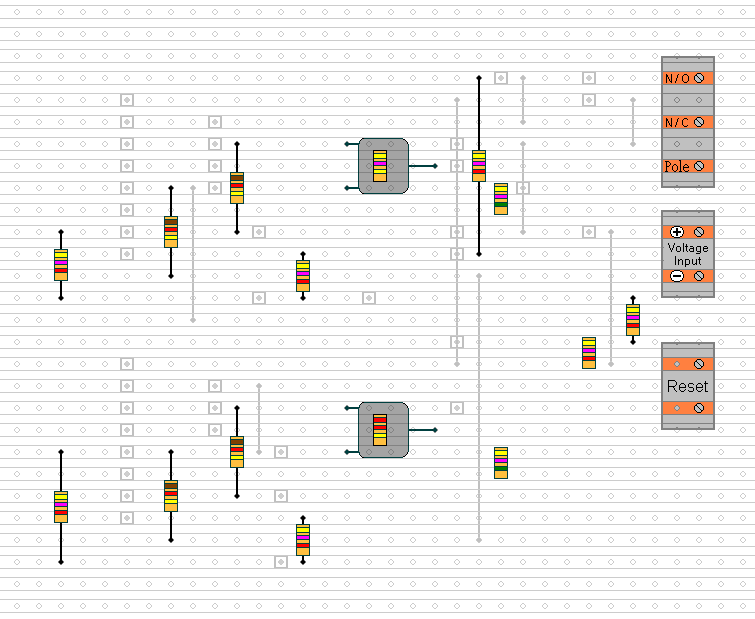
Next - fit the two transistors - the 3 diodes - the eight capacitors and the four LEDs. Pay particular attention to the orientation of the diodes and electrolytic capacitors. Because non-polarized electrolytic capacitors are not widely available - I used pairs of regular polarized capacitors - connected back-to-back.
Add the relay and the two IC sockets. Using the sockets reduces the risk of damage to the ICs - and makes them easier to replace should the need arise.
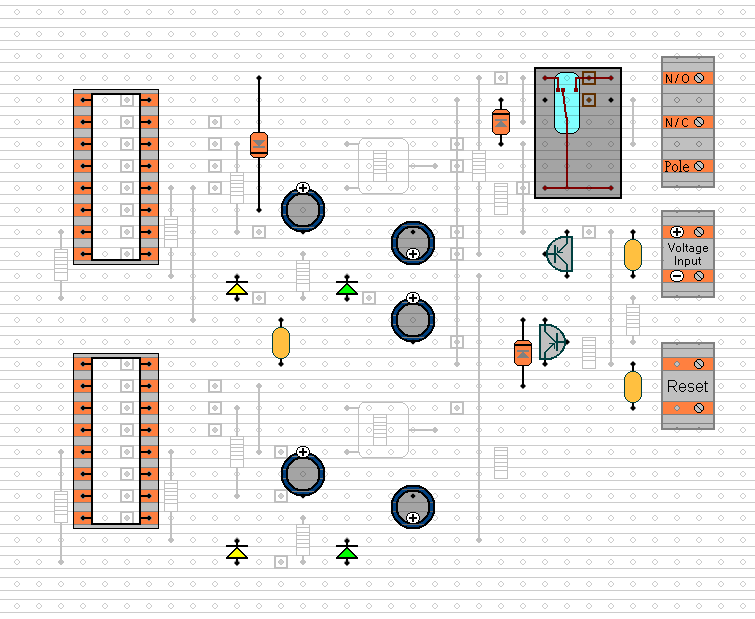
Next - use a magnifying glass to examine the underside of the board. Make sure that there are no unwanted solder bridges or other connections between the tracks. If you backlight the board during the examination - it makes potential problem areas easier to spot.
When you're satisfied that everything is in order - add the six (blue) solder bridges to the underside of the board. These are just small blobs of solder. I've used them to connect adjacent tracks. They are a simple and convenient alternative to wire links.
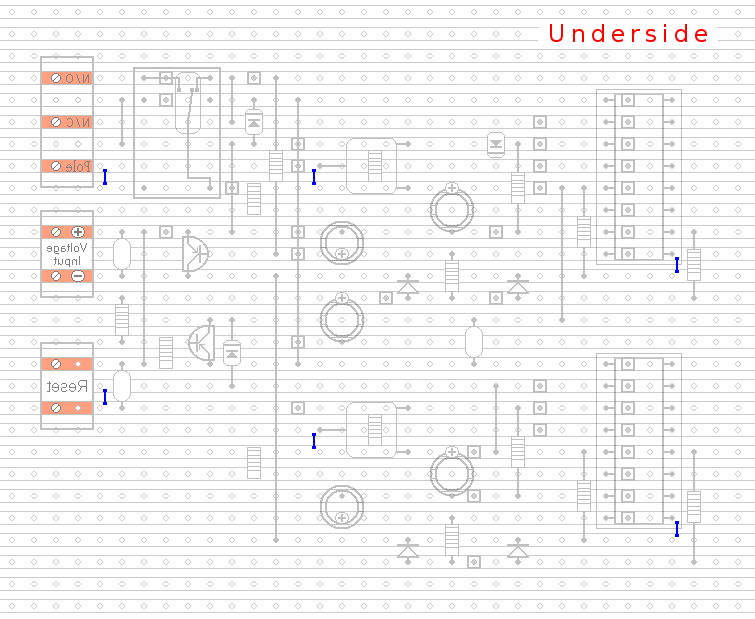
Finish off by inserting the two ICs into the sockets. Pin 1 of each IC should be in the top left-hand corner. Check that all 16 pins have entered the socket. Sometimes - instead of entering the socket - a pin will curl up under the IC.
You Are Now Ready To Test Your Timer


